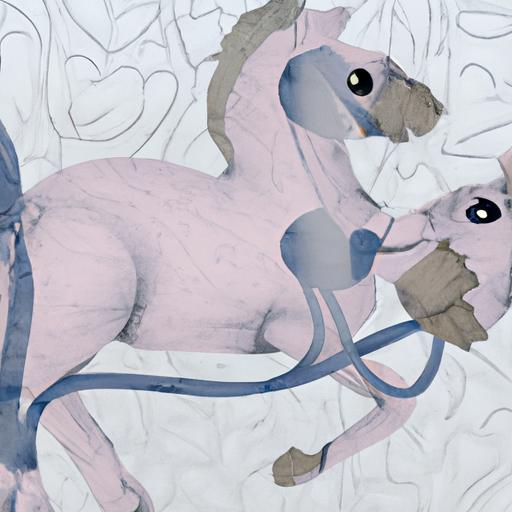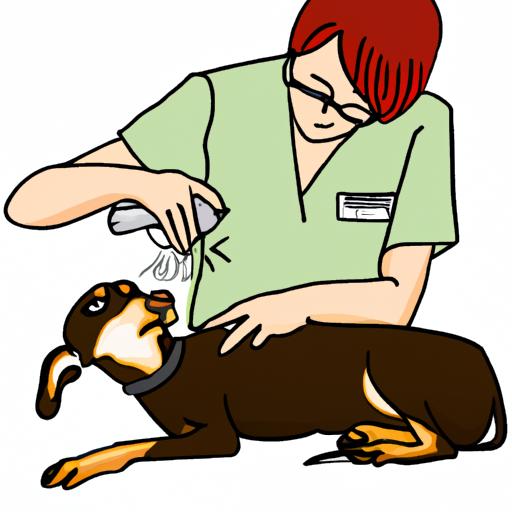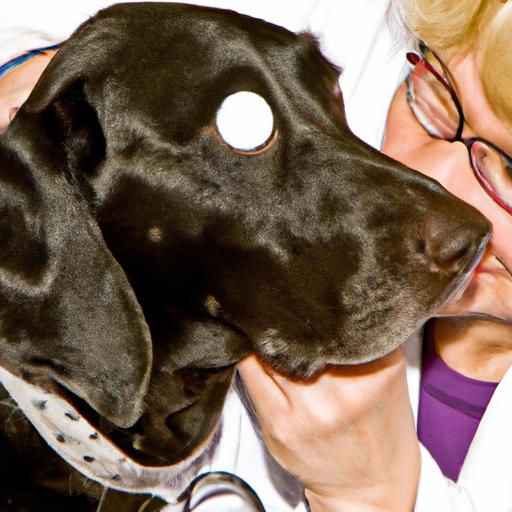
Canine Fungal Infections: Identification and Treatment
Learn how to identify and treat canine fungal infections with our comprehensive guide. Understand the symptoms, diagnostic methods, and treatment options.
Introduction
When it comes to our furry companions, their health and well-being are of utmost importance. Unfortunately, dogs can also fall victim to various health conditions, including fungal infections. These infections can be bothersome and sometimes even pose a threat to their overall health. In this article, we will explore the identification and treatment of canine fungal infections, providing you with valuable insights to ensure the well-being of your beloved pet.
FAQ about Canine Fungal Infections
What are canine fungal infections?
Canine fungal infections are caused by various types of fungi that can affect a dog’s skin, respiratory system, or internal organs. Common fungal infections in dogs include ringworm, blastomycosis, aspergillosis, and histoplasmosis.
How common are fungal infections in dogs?
Fungal infections are relatively common in dogs, especially those with weakened immune systems or those living in humid environments. However, the prevalence may vary depending on geographical location and other factors.
What are the symptoms of a canine fungal infection?
The symptoms of canine fungal infections can vary depending on the type of infection and the affected area. Common signs may include skin lesions, hair loss, coughing, sneezing, difficulty breathing, decreased appetite, weight loss, and lethargy. It’s important to note that these symptoms can also indicate other health issues, so proper diagnosis is crucial.
Can fungal infections in dogs be contagious to humans?
Certain fungal infections in dogs, such as ringworm, can be transmitted to humans. It’s essential to take precautions when dealing with an infected animal to prevent the spread of infection. Regular handwashing and avoiding direct contact with affected areas are recommended.
How are fungal infections diagnosed in dogs?
To diagnose a fungal infection in dogs, a veterinarian may perform a physical examination, take skin or tissue samples for fungal cultures, or conduct blood tests to detect antibodies or antigens related to specific fungal infections. These diagnostic methods help identify the type of infection and determine the most appropriate treatment plan.

Identifying Canine Fungal Infections
Types of fungal infections in dogs
Ringworm
Ringworm is a highly contagious fungal infection that affects the skin, fur, and occasionally the nails of dogs. Despite its name, ringworm is not caused by worms but by fungi known as dermatophytes. It often appears as circular patches of hair loss with redness, scaling, and sometimes itching.
Blastomycosis
Blastomycosis is a systemic fungal infection caused by the fungus Blastomyces. It primarily affects the respiratory system but can spread to other organs. Symptoms may include coughing, difficulty breathing, fever, weight loss, and skin lesions. This infection is more prevalent in certain regions with moist soil, such as the Midwestern United States.
Aspergillosis
Aspergillosis is a respiratory fungal infection caused by the Aspergillus fungus. Dogs can inhale the spores, leading to respiratory symptoms such as coughing, sneezing, nasal discharge, and difficulty breathing. In severe cases, the infection can spread to other organs.
Histoplasmosis
Histoplasmosis is an infection caused by inhaling spores of the Histoplasma fungus, commonly found in soil enriched with bird droppings. It primarily affects the lungs but can also involve other organs. Symptoms include coughing, difficulty breathing, fever, weight loss, and lethargy.
Recognizing the signs and symptoms of canine fungal infections
Identifying the signs and symptoms of canine fungal infections is crucial for prompt intervention and effective treatment. Keep an eye out for skin lesions, hair loss, redness, scaling, coughing, sneezing, nasal discharge, difficulty breathing, decreased appetite, weight loss, and lethargy. If you notice any of these symptoms, it is essential to consult a veterinarian for a proper diagnosis.
Diagnostic methods for identifying fungal infections in dogs
To accurately diagnose a fungal infection in dogs, veterinarians employ several diagnostic methods. These may include:
Physical examination
During a physical examination, a veterinarian will inspect the dog’s skin, fur, and other areas to identify any visible signs of infection, such as lesions or hair loss. They may also check for additional symptoms and evaluate the overall health of the animal.
Fungal cultures
Fungal cultures involve collecting samples of skin, fur, or tissues from the affected areas and incubating them under specific conditions to encourage fungal growth. This allows the veterinarian to identify the specific fungus causing the infection and determine the most appropriate treatment plan.
Blood tests
Blood tests can be conducted to detect the presence of antibodies or antigens associated with specific fungal infections. These tests help confirm the diagnosis and provide valuable information about the severity of the infection.
Treatment Options for Canine Fungal Infections
Antifungal medications for dogs
Once a fungal infection is diagnosed, the veterinarian will prescribe antifungal medications tailored to the specific type of infection. These medications may be administered orally, topically, or through intravenous injections, depending on the severity and location of the infection. It is crucial to follow the prescribed dosage and duration of treatment to ensure effective eradication of the infection.
Topical treatments for fungal infections in dogs
In addition to systemic antifungal medications, topical treatments such as medicated shampoos or creams can be used to address localized fungal infections on the skin or nails. These products help eliminate fungi on the surface and provide relief from symptoms like itching and inflammation.
Surgical interventions for severe cases
In some severe cases, surgical intervention may be necessary to remove infected tissue or address complications resulting from the fungal infection. This is typically performed by a veterinary surgeon and is recommended when medications alone cannot effectively treat the infection.
Supportive care and management during treatment
During the treatment of canine fungal infections, it is essential to provide proper supportive care to aid the healing process. This may include maintaining good hygiene, ensuring a clean and comfortable environment, providing a nutritious diet, and administering any additional medications or supplements recommended by the veterinarian.
Preventive measures to avoid future infections
Prevention is always better than cure when it comes to fungal infections in dogs. To minimize the risk of your pet contracting a fungal infection, consider the following preventive measures:
- Keep your dog’s living area clean and well-ventilated.
- Avoid areas with high fungal contamination, such as decaying organic matter or bird droppings.
- Regularly groom your dog to maintain healthy skin and coat.
- Practice proper hygiene, including handwashing after handling animals or cleaning up after them.
- Consult with your veterinarian regarding vaccinations and preventive medications that can help protect your dog from specific fungal infections.
Conclusion
Canine fungal infections can be a challenge for both dogs and their owners. Identifying these infections early on and seeking proper treatment is crucial for the well-being of our furry friends. By understanding the types, symptoms, and diagnostic methods, as well as the available treatment options, we can ensure that our dogs receive the care they need. Remember to consult with a veterinarian for a comprehensive diagnosis and personalized treatment plan. By prioritizing prevention and providing the necessary care, we can help our beloved canines stay happy and healthy, free from the burden of fungal infections.






























